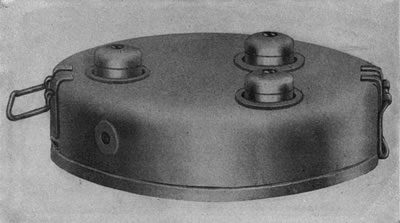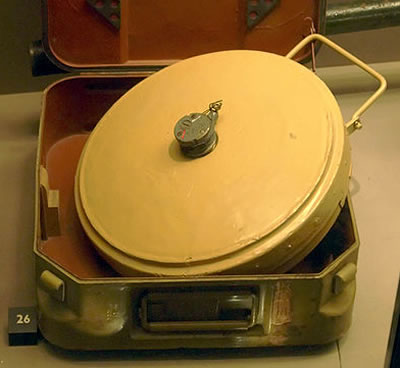The Tellermine 29 and the Tellermine 35 were the first anti-tank mines. The Tellermine 29, the first anti-tank mine, was developed by the Germans in 1931.
Anti-tank mines that are in service today bear similarities to the Tellermine 29.
The Tellermine 29 had about 13lb (6kg) of TNT, which was held in an 18inch (454mm) disk-shaped container that was made of metal.
It had three fuse wells that could be ignited by pressure or by pulling.
 Three more fuse wells could be detonated by remote control, by handling or via booby traps.
Three more fuse wells could be detonated by remote control, by handling or via booby traps.
These were supposed to prevent enemy combat engineers from trying to neutralize the mine or trying to re-use it.
The Tellermine 35 followed the Tellermine 29.
 It had a pressure plate with a pressure fuse that was activated by a pressure of 176 to 396 pounds (80 to 180 kilograms.)
It had a pressure plate with a pressure fuse that was activated by a pressure of 176 to 396 pounds (80 to 180 kilograms.)
When the fuse was ignited, 18 pounds (8 kg) of TNT would be detonated.
The Tellermine 39 was designed to allow foot soldiers to walk over the mine without being harmed.
A later version of the mine, the Tellermine 35 (Stahl) used a new pressure plate that was supposed to conserve raw materials.
The Tellermine 42 and 43 were designed to be cheaper and more quickly produced.